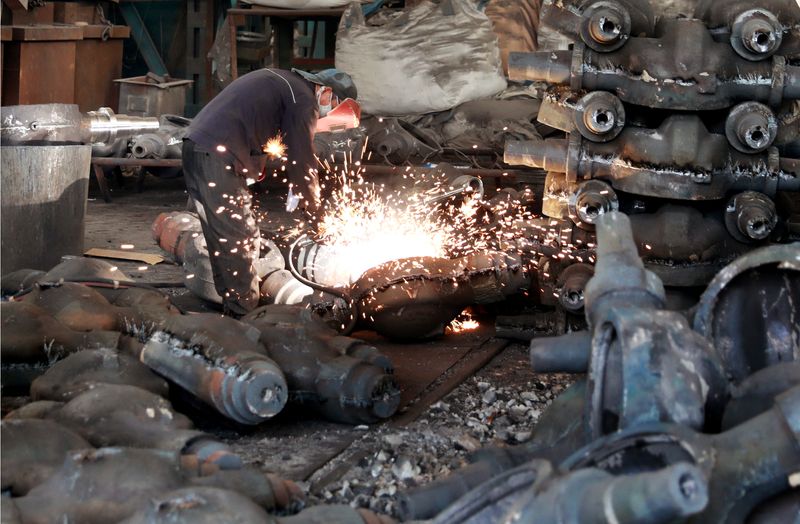By Liangping Gao and Joe Cash
BEIJING (Reuters) -Mixed factory activity data for China in November suggests more stimulus will be needed to shore up economic growth, analysts said on Friday, as two surveys came to contrasting conclusions on the sector's health.
China's economy has struggled to mount a strong post-COVID recovery due to an ailing housing market, local government debt risks and slow global growth. That has squeezed factory owners who have had to contend with high input costs, overcapacity, soft demand, and officials prioritising rescuing other parts of the economy.
The Caixin/S&P Global manufacturing purchasing managers' index (PMI) unexpectedly rose to 50.7 in November from a 49.5 reading in October.
That was the fastest expansion in three months, but stands in contrast to the official PMI which fell to 49.4 on Thursday. The 50-point mark separates growth from contraction.
"At face value, the average of the two is consistent with factory activity remaining largely unchanged last month," said Sheana Yue, China economist at Capital Economics.
"But that may not be the case in practice - the hard data have held up better than survey-based measures lately."
The official and Caixin surveys have different samples, with the Caixin PMI focusing on export-oriented enterprises and small- and medium-sized enterprises in the country's coastal region.
"The economy is running at different speeds across industries, though we expect the policy stance to remain proactive which will help to sustain overall growth momentum into the coming quarters," economists at HSBC said on Thursday.
The Caixin survey data was supported by the quickest rise since June in new orders received by Chinese goods producers in November, but in the official survey new orders dipped back into contraction.
The official survey has contracted for seven out of the past eight months, while the Caixin survey has been more volatile, dipping in and out of contraction three times over the same period.
The last time the official indicator was negative for more than three consecutive months was in the six months to October 2019, suggesting pessimism has become entrenched among some factory owners.
"I don't think there can be a fix," said Dan Wang, chief economist at Hang Seng Bank China on Thursday, warning factory activity was unlikely to improve anytime soon as other economic problems dominate.
"The priority now is clearly containing the local government debt risk and the risk posed by regional banks."
China's consumer prices swung lower in October, as key gauges of domestic demand pointed to weakness not seen since the pandemic, while factory-gate deflation deepened.
In a nod to the need to step up support for industry, Chinese president Xi Jinping visited the Yangtze River Delt region on Thursday. He called for closer integration across the sprawling industrial hub encompassing several major cities with millions of people, as well as China's biggest port in Shanghai.
But weak external demand remained an important factor affecting factory activity in both surveys, with the new export index registering 49.0 and contracting for a fifth consecutive month in November in the Caixin survey and 46.8 in the official one.
Payroll cuts in the sector persisted for the third month in the Caixin survey and a ninth month in the official PMI.
